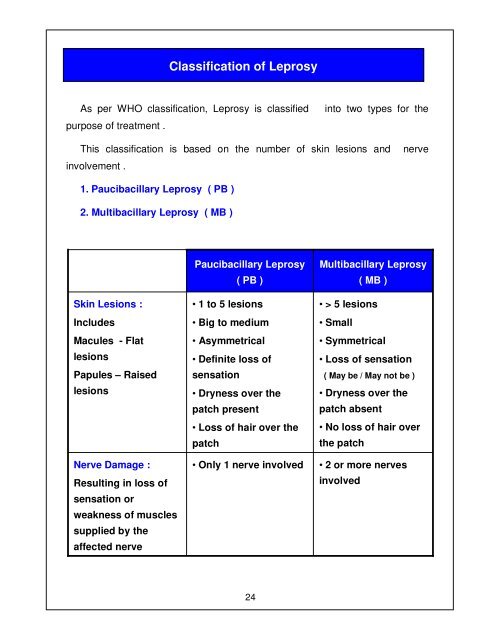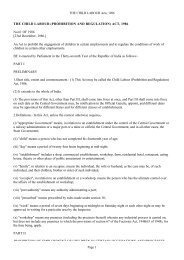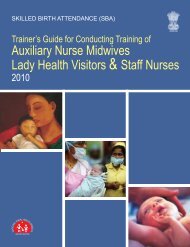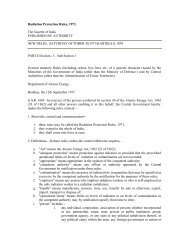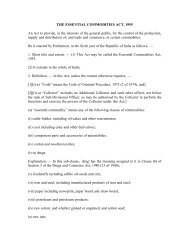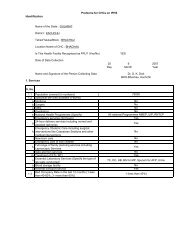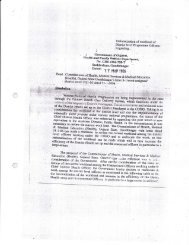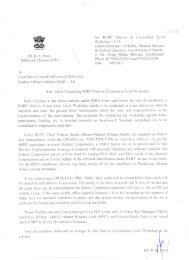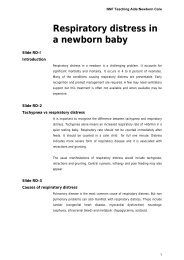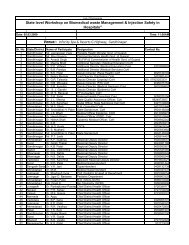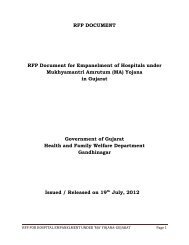Leprosy Training Module for Medical Officers
Leprosy Training Module for Medical Officers
Leprosy Training Module for Medical Officers
Create successful ePaper yourself
Turn your PDF publications into a flip-book with our unique Google optimized e-Paper software.
Classification of <strong>Leprosy</strong><br />
As per WHO classification, <strong>Leprosy</strong> is classified<br />
purpose of treatment .<br />
into two types <strong>for</strong> the<br />
This classification is based on the number of skin lesions and<br />
involvement .<br />
nerve<br />
1. Paucibacillary <strong>Leprosy</strong> ( PB )<br />
2. Multibacillary <strong>Leprosy</strong> ( MB )<br />
Skin Lesions :<br />
Includes<br />
Macules - Flat<br />
lesions<br />
Papules – Raised<br />
lesions<br />
Nerve Damage :<br />
Resulting in loss of<br />
sensation or<br />
weakness of muscles<br />
supplied by the<br />
affected nerve<br />
Paucibacillary <strong>Leprosy</strong><br />
( PB )<br />
• 1 to 5 lesions<br />
• Big to medium<br />
• Asymmetrical<br />
• Definite loss of<br />
sensation<br />
• Dryness over the<br />
patch present<br />
• Loss of hair over the<br />
patch<br />
• Only 1 nerve involved<br />
Multibacillary <strong>Leprosy</strong><br />
( MB )<br />
• > 5 lesions<br />
• Small<br />
• Symmetrical<br />
• Loss of sensation<br />
( May be / May not be )<br />
• Dryness over the<br />
patch absent<br />
• No loss of hair over<br />
the patch<br />
• 2 or more nerves<br />
involved<br />
24


